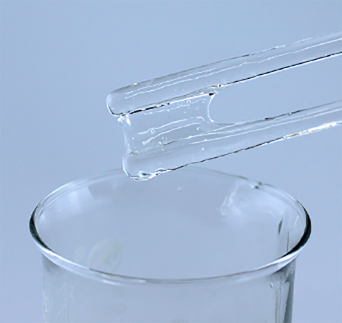
joulu . 26, 2024 00:34 Back to list
Exploring the Versatile Applications of Hydroxyethyl Cellulose in Modern Industries
The Versatility of Hydroxyethyl Cellulose (HEC) A Comprehensive Overview
Hydroxyethyl cellulose (HEC) is a non-ionic, water-soluble polymer derived from cellulose, a natural polymer that is abundantly found in plant cell walls. This versatile biopolymer has gained significant attention across various industries due to its unique properties and functionality. In this article, we explore the characteristics, applications, and benefits of HEC, highlighting its important role in several fields, including pharmaceuticals, cosmetics, and construction.
Characteristics of HEC
HEC is produced through the etherification of cellulose by reacting it with ethylene oxide. The result is a white, odorless, granular powder that is highly soluble in cold and hot water, forming a transparent and viscous solution. Its chemical structure consists of long chains of glucose units, which are modified with hydroxyethyl groups. The degree of substitution (DS) and the molecular weight of HEC can be tailored during production, allowing for a wide range of formulations based on specific application needs.
One of the most remarkable features of HEC is its thickening ability. As a thickening agent, it can significantly increase the viscosity of solutions even at low concentrations. Furthermore, HEC is stable across a broad pH range and offers good resistance to electrolytes, making it suitable for use in various formulations. Its non-ionic nature also means that HEC does not interfere with ionic ingredients, which is advantageous for many applications.
Applications in the Pharmaceutical Industry
In the pharmaceutical sector, HEC is primarily used as a thickening and stabilizing agent in topical formulations, such as creams, gels, and ointments. Its ability to retain moisture and improve texture makes it an ideal choice for enhancing product performance and user experience. Additionally, HEC can serve as a controlled-release agent, enabling the sustained release of active pharmaceutical ingredients (APIs). This characteristic is particularly valuable in formulating drug delivery systems, providing patients with a gradual release of medication over time.
Moreover, HEC acts as a suspending agent in liquid formulations, ensuring uniform distribution of solid particles and preventing separation. Its biocompatibility and safety profile further enhance its appeal in pharmaceutical applications, ensuring that it meets regulatory standards for use in healthcare products.
hec hydroxyethyl cellulose

Benefits in Cosmetics and Personal Care
The cosmetic and personal care industry also benefits significantly from HEC's properties. It is commonly incorporated into lotions, creams, shampoos, and gels, where it functions as a thickener, stabilizer, and emulsifier. In skin care products, HEC helps enhance moisture retention, providing a smooth and silky texture that improves the overall user experience.
Additionally, HEC's ability to form films can create a protective barrier on the skin and hair, reducing moisture loss and enhancing hydration. This film-forming characteristic is particularly beneficial in formulations designed for sensitive skin, as it can create a soothing effect.
Construction and Industrial Applications
Beyond pharmaceuticals and cosmetics, HEC finds utility in the construction industry, particularly in water retention and as an additive in gypsum boards and paints. It acts as a thickening agent in mortar and plaster formulations, improving workability and preventing sagging during application. Furthermore, its water retention properties enhance the strength and longevity of building materials, contributing to sustainable construction practices.
Conclusion
In summary, hydroxyethyl cellulose (HEC) stands out as a multi-functional polymer with diverse applications across various industries. Its unique properties, such as thickening, stabilizing, and film-forming capabilities, make it an essential ingredient in pharmaceutical, cosmetic, and construction formulations. As industries continue to evolve, the versatility of HEC is likely to remain a key asset, driving innovation and enhancing the performance of a wide range of products. With ongoing research and development, the potential applications of HEC are set to expand further, solidifying its position as a valuable material in the global market.
-
Versatile Hpmc Uses in Different Industries
NewsJun.19,2025
-
Redispersible Powder's Role in Enhancing Durability of Construction Products
NewsJun.19,2025
-
Hydroxyethyl Cellulose Applications Driving Green Industrial Processes
NewsJun.19,2025
-
Exploring Different Redispersible Polymer Powder
NewsJun.19,2025
-
Choosing the Right Mortar Bonding Agent
NewsJun.19,2025
-
Applications and Significance of China Hpmc in Modern Industries
NewsJun.19,2025







